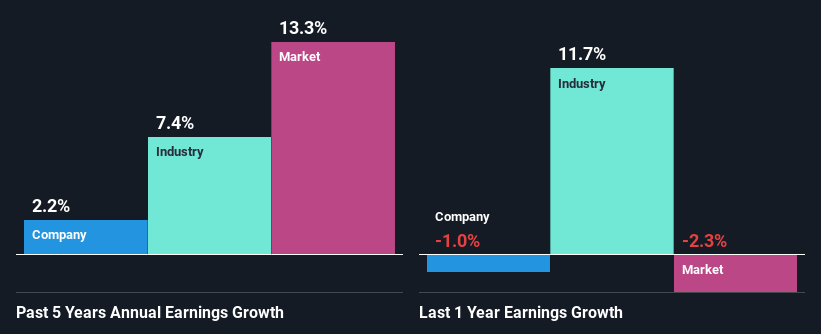Has Flowserve Corporation's (NYSE:FLS) Impressive Stock Performance Got Anything to Do With Its Fundamentals?
Flowserve (NYSE:FLS) has had a great run on the share market with its stock up by a significant 18% over the last three months. As most would know, fundamentals are what usually guide market price movements over the long-term, so we decided to look at the company's key financial indicators today to determine if they have any role to play in the recent price movement. In this article, we decided to focus on Flowserve's ROE.
Return on Equity or ROE is a test of how effectively a company is growing its value and managing investors’ money. In short, ROE shows the profit each dollar generates with respect to its shareholder investments.
Check out our latest analysis for Flowserve
How Is ROE Calculated?
ROE can be calculated by using the formula:
Return on Equity = Net Profit (from continuing operations) ÷ Shareholders' Equity
So, based on the above formula, the ROE for Flowserve is:
10% = US$205m ÷ US$2.0b (Based on the trailing twelve months to December 2023).
The 'return' is the yearly profit. So, this means that for every $1 of its shareholder's investments, the company generates a profit of $0.10.
What Has ROE Got To Do With Earnings Growth?
Thus far, we have learned that ROE measures how efficiently a company is generating its profits. Depending on how much of these profits the company reinvests or "retains", and how effectively it does so, we are then able to assess a company’s earnings growth potential. Generally speaking, other things being equal, firms with a high return on equity and profit retention, have a higher growth rate than firms that don’t share these attributes.
A Side By Side comparison of Flowserve's Earnings Growth And 10% ROE
To start with, Flowserve's ROE looks acceptable. Even when compared to the industry average of 12% the company's ROE looks quite decent. Despite the moderate return on equity, Flowserve has posted a net income growth of 2.2% over the past five years. We reckon that a low growth, when returns are moderate could be the result of certain circumstances like low earnings retention or poor allocation of capital.
As a next step, we compared Flowserve's net income growth with the industry and were disappointed to see that the company's growth is lower than the industry average growth of 7.4% in the same period.
The basis for attaching value to a company is, to a great extent, tied to its earnings growth. The investor should try to establish if the expected growth or decline in earnings, whichever the case may be, is priced in. By doing so, they will have an idea if the stock is headed into clear blue waters or if swampy waters await. Is FLS fairly valued? This infographic on the company's intrinsic value has everything you need to know.
Is Flowserve Efficiently Re-investing Its Profits?
The high three-year median payout ratio of 63% (that is, the company retains only 37% of its income) over the past three years for Flowserve suggests that the company's earnings growth was lower as a result of paying out a majority of its earnings.
Additionally, Flowserve has paid dividends over a period of at least ten years, which means that the company's management is determined to pay dividends even if it means little to no earnings growth. Upon studying the latest analysts' consensus data, we found that the company's future payout ratio is expected to drop to 29% over the next three years. As a result, the expected drop in Flowserve's payout ratio explains the anticipated rise in the company's future ROE to 16%, over the same period.
Conclusion
Overall, we feel that Flowserve certainly does have some positive factors to consider. Yet, the low earnings growth is a bit concerning, especially given that the company has a high rate of return. Investors could have benefitted from the high ROE, had the company been reinvesting more of its earnings. As discussed earlier, the company is retaining a small portion of its profits. That being so, the latest analyst forecasts show that the company will continue to see an expansion in its earnings. Are these analysts expectations based on the broad expectations for the industry, or on the company's fundamentals? Click here to be taken to our analyst's forecasts page for the company.
Have feedback on this article? Concerned about the content? Get in touch with us directly. Alternatively, email editorial-team (at) simplywallst.com.
This article by Simply Wall St is general in nature. We provide commentary based on historical data and analyst forecasts only using an unbiased methodology and our articles are not intended to be financial advice. It does not constitute a recommendation to buy or sell any stock, and does not take account of your objectives, or your financial situation. We aim to bring you long-term focused analysis driven by fundamental data. Note that our analysis may not factor in the latest price-sensitive company announcements or qualitative material. Simply Wall St has no position in any stocks mentioned.

 Yahoo Finance
Yahoo Finance 
